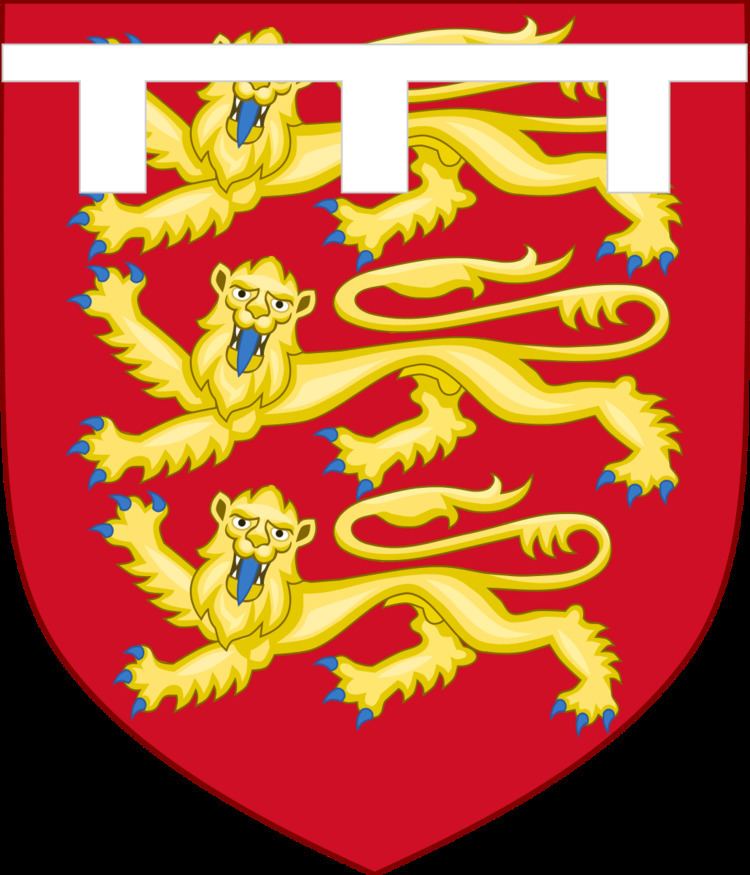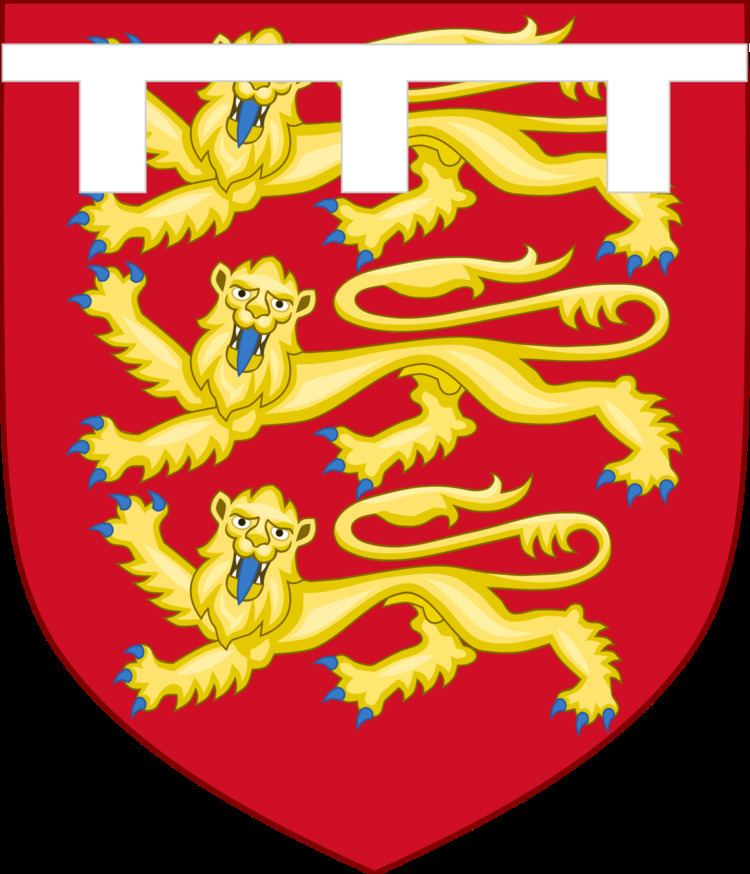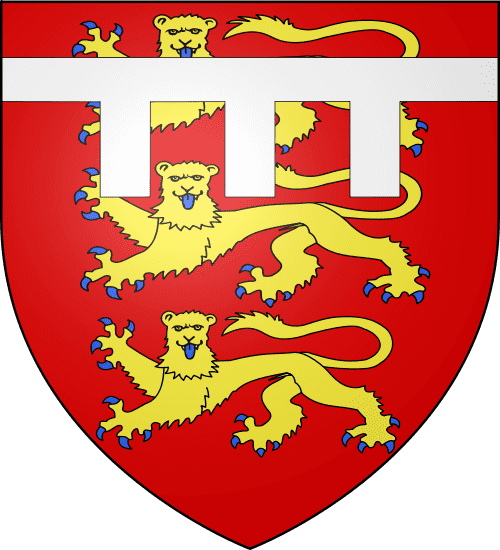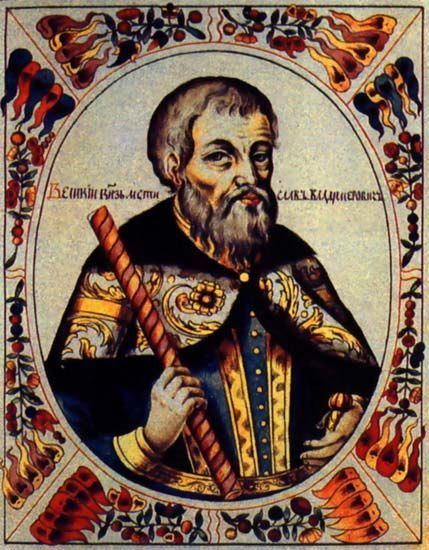Died August 4, 1338 Name Thomas Brotherton, | Years active 1316 – 1338 Tenure 1312 – 1338 Siblings Edward II of England | |
 | ||
Resting place Bury St Edmunds Abbey, Suffolk52°14′38.76″N 0°43′9.12″E / 52.2441000°N 0.7192000°E / 52.2441000; 0.7192000 Known for Younger half-brother of Edward II of England Wars and battles Second War of Scottish IndependenceBattle of Halidon Hill Children Margaret, Duchess of Norfolk, Alice of Norfolk Parents Margaret of France, Queen of England, Edward I of England Grandchildren Anne Hastings, Countess of Pembroke Similar People Edward I of England, Margaret of France - Queen of, Margaret - Duchess of Norfolk, Edward II of England, Thomas - 2nd Earl of Lancaster | ||
Thomas of brotherton 1st earl of norfolk
Thomas of Brotherton, 1st Earl of Norfolk (1 June 1300 – 4 August 1338), was the fifth son of King Edward I (1272-1307), and the eldest child by his second wife Margaret of France, the daughter of Philip III of France. He was, therefore, a younger half-brother of King Edward II (1307-1327) and a full brother of Edmund, Earl of Kent. He occupied the office of Earl Marshal of England.
Contents

Early life

Thomas of Brotherton was born 1 June 1300 at the manor house at Brotherton, Yorkshire, while his mother was on her way to Cawood, where her confinement was scheduled to take place. According to Hilton, Margaret was staying at Pontefract Castle and was following a hunt when she went into labour. The chronicler William Rishanger records that during the difficult delivery his mother prayed, as was the custom at the time, to Thomas Becket, and Thomas of Brotherton was thus named after the saint and his place of birth.

Edward I hastened to the queen and the newborn baby and had him presented with two cradles. His brother Edmund was born in the year after that. They were overseen by wet nurses until they were six years old. Like their parents, they learned to play chess and to ride horses. They were visited by nobles and their half-sister Mary of Woodstock, who was a nun. Their mother often accompanied Edward on his campaigns to Scotland, but kept herself well-informed on their well-being.
His father died when he was 7 years old. Thomas's half-brother, Edward, became king of England and Thomas was heir presumptive until his nephew Edward was born in 1312. The Earldom of Cornwall had been intended for Thomas, but Edward instead bestowed it upon his favourite, Piers Gaveston, in 1306. When Thomas was 10 years old, Edward assigned to him and his brother Edmund, the estates of Roger Bigod, 5th Earl of Norfolk who had died without heirs in 1306.
Career
In 1312, he was titled "Earl of Norfolk" and on 10 February 1316 he was created Earl Marshal. While his brother was away fighting in Scotland, he was left Keeper of England. He was known for his hot and violent temper. He was one of the many victims of the unchecked greed of the king's new favourite, Hugh Despenser the Younger and his father Hugh Despenser the Elder, who stole some of the young earl's lands. He allied himself with Queen Isabella and Roger Mortimer when they invaded England in 1326, and stood as one of the judges in the trials against both Despensers. When his nephew Edward III reached his majority and took the government into his own hands Thomas became one of his principal advisors. It was in the capacity of Lord Marshal that he commanded the right wing of the English army at the Battle of Halidon Hill on 19 July 1333.
He died about 20 September 1338, and was buried in the choir of the Abbey of Bury St Edmunds.
He was succeeded by his daughter, Margaret, as Countess of Norfolk. She was later created Duchess of Norfolk for life in 1397.
As a son of Edward I of England, he was entitled to bear the coat of arms of the Kingdom of England, differenced by a label argent of three points.
Marriages and issue
He married firstly, before 8 January 1326, Alice de Hales (d. before 12 October 1330), daughter of Sir Roger de Hales of Hales Hall in Loddon in Roughton, Norfolk, by his wife, Alice, by whom he had a son and two daughters:
Alice Hales died by October 1330, when a chantry was founded for her soul in Bosham, Sussex.
He married secondly, before 4 April 1336, Mary de Brewes (died 11 June 1362), widow of Sir Ralph de Cobham, (d. 5 February 1326), and daughter of Sir Peter de Brewes (d. before 7 February 1312) of Tetbury, Gloucestershire, by Agnes de Clifford (d. before 1332), by whom he had no surviving issue.
